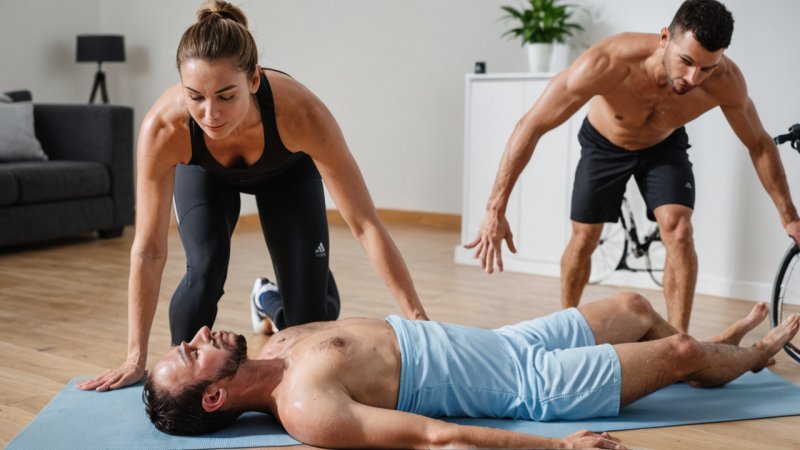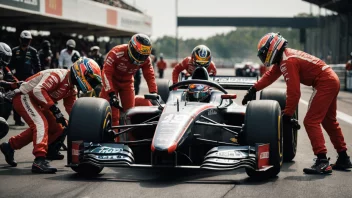In the world of cycling, recovery is a critical component of performance enhancement. Athletes often find themselves debating whether to incorporate active recovery techniques, such as light cycling or yoga, or to opt for passive recovery methods, such as complete rest or massage therapy. Both approaches have their merits, but understanding their differences can help cyclists optimize their recovery and improve overall performance. In this article, we will compare active and passive recovery techniques, examining their benefits and drawbacks while providing insights on how to effectively integrate them into a training regimen.
What is Active Recovery?
Active recovery refers to low-intensity exercises performed after a strenuous workout. The goal is to encourage blood flow to the muscles, helping to clear out metabolic waste and reduce soreness. Common active recovery activities for cyclists include light cycling, walking, swimming, or yoga. This method is often employed immediately after intense training sessions or races, as well as on rest days.
Benefits of Active Recovery
- Improved Circulation: Engaging in low-intensity activities promotes blood flow, which can accelerate the removal of lactic acid and other toxins from the muscles.
- Reduced Muscle Soreness: Active recovery can alleviate delayed onset muscle soreness (DOMS) by maintaining muscle movement and flexibility.
- Psychological Benefits: Many cyclists find that light activity helps them mentally transition from intense training, alleviating feelings of fatigue.
Drawbacks of Active Recovery
- Risk of Overexertion: If not carefully monitored, active recovery can lead to overexertion, which may hinder recovery instead of aiding it.
- Time Commitment: Active recovery requires additional time and energy, which may be challenging for cyclists with busy schedules.
What is Passive Recovery?
Passive recovery, on the other hand, involves complete rest or minimal physical activity. This can include sleeping, resting, or receiving therapeutic treatments like massage, compression, or ice baths. The primary aim of passive recovery is to allow the body to heal and restore energy without any exertion.
Benefits of Passive Recovery
- Complete Muscle Rest: Passive recovery provides the muscles with a break, allowing for tissue repair and rebuilding.
- Effective Pain Relief: Techniques such as massage and ice baths can significantly reduce inflammation and soreness.
- Convenience: Passive recovery techniques often require less time than active workouts, making it easier to incorporate into a busy lifestyle.
Drawbacks of Passive Recovery
- Decreased Circulation: Extended periods of inactivity can reduce blood flow, potentially prolonging recovery times.
- Psychological Impact: Some athletes may feel anxious or guilty for not engaging in physical activity, which can affect their mental state.
Comparative Analysis of Active vs. Passive Recovery
When deciding which recovery method to utilize, it’s essential to consider various factors, including training intensity, personal preferences, and individual recovery needs. Below is a comparative analysis of active and passive recovery techniques:
| Criterion | Active Recovery | Passive Recovery |
|---|---|---|
| Intensity Level | Low-Intensity Activity | No Activity |
| Duration | Varies (30 min to 1 hour) | Varies (from hours to days) |
| Primary Goal | Improve Circulation & Reduce Soreness | Muscle Repair & Energy Restoration |
| Flexibility Enhancement | Yes | No |
| Ease of Integration | Moderate | High |
| Risk of Overexertion | Yes | No |
Choosing the Right Recovery Technique for You
Ultimately, the choice between active and passive recovery will depend on individual preferences and circumstances. For cyclists engaged in high-intensity training or competition, incorporating both methods may yield the best results. Active recovery can be beneficial immediately post-workout or on light training days, while passive recovery should be prioritized after particularly grueling sessions or races to allow for full muscle recovery.
Combining Approaches
Many athletes find success by combining both recovery techniques. For example, a cyclist may opt for active recovery on the day following a hard ride, followed by a session of passive recovery, such as a massage or ice bath, to further aid in muscle recovery. This integrative approach allows for the benefits of both methods while minimizing their drawbacks.
Conclusion
In conclusion, both active and passive recovery methods possess unique advantages and disadvantages. Active recovery can enhance circulation and reduce soreness, while passive recovery allows for complete muscle rest and recovery. Cyclists should evaluate their training routines and recovery needs to determine the best approach for them. By understanding and effectively implementing these recovery techniques, athletes can enhance their performance on the bike while prioritizing their safety and well-being.






